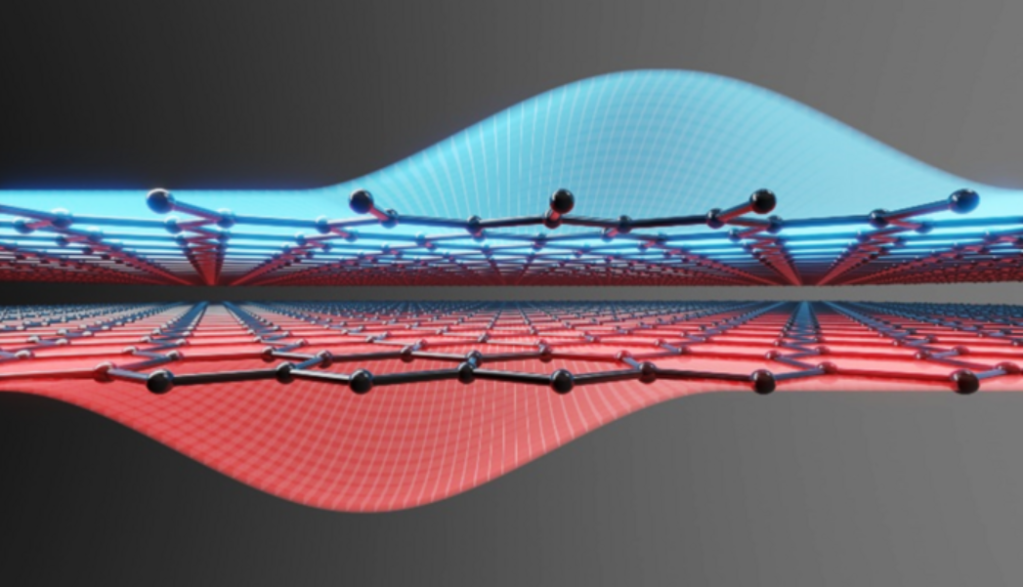Graphene Quantum Dots (GQDs): The Next Frontier in Nanotechnology
Graphene Quantum Dots (GQDs), nanoscale fragments of graphene with exceptional quantum properties, have emerged as a game-changing material. Their unique optical, electrical, and biocompatible characteristics open new possibilities across various industries, including biomedicine, electronics, and sensing technologies.

In this article, we explore the synthesis methods, advantages, and groundbreaking applications of GQDs, highlighting their role in shaping the future of nanotechnology.
1. What Are Graphene Quantum Dots?
GQDs are small graphene fragments, typically less than 20 nm in size, possessing unique quantum confinement and edge effects. These properties grant GQDs extraordinary photoluminescence, making them highly desirable for optoelectronic and biomedical applications.
Due to their high biocompatibility and tunable optical properties, GQDs outperform traditional quantum dots, making them a preferred choice in sensitive and sustainable applications.
2. Synthesis of Graphene Quantum Dots
The synthesis of GQDs involves two primary approaches: top-down and bottom-up methods.
2.1 Top-Down Methods
This approach involves breaking down larger graphene structures into nanoscale quantum dots.
- Techniques:
- Chemical Oxidation: Oxidizing graphene or graphite in strong acids to create GQDs.
- Hydrothermal or Solvothermal Cutting: Using high temperature and pressure to cut graphene sheets into smaller fragments.
- Laser Ablation: Employing lasers to precisely fragment graphene into quantum dots.
Advantages:
- Scalable and cost-effective.
- Produces uniform-sized GQDs.
2.2 Bottom-Up Methods
This method builds GQDs atom by atom through chemical synthesis.
- Techniques:
- Carbonization: Heating organic precursors to form GQDs.
- Chemical Vapor Deposition (CVD): Depositing carbon atoms onto a substrate to grow GQDs.
Advantages:
- Greater control over size and functional groups.
- Suitable for tailoring GQDs with specific properties.
3. Advantages of Graphene Quantum Dots
3.1 Unique Quantum Effects
GQDs exhibit enhanced optical and electrical properties due to quantum confinement and edge effects:
- Photoluminescence: High quantum yield with tunable emission wavelengths.
- Small Bandgap: Enables efficient electron transfer in optoelectronic applications.
3.2 High Biocompatibility
Unlike traditional quantum dots that often contain toxic heavy metals, GQDs are non-toxic and biocompatible, making them ideal for biomedical uses.
3.3 Scalability and Versatility
The synthesis of GQDs is scalable and adaptable for various functionalizations, enabling their integration into numerous applications.
4. Applications of Graphene Quantum Dots
4.1 Biomedicine
GQDs are revolutionizing healthcare with applications in imaging, diagnostics, and therapy.
- Bioimaging: GQDs are fluorescent probes that enable real-time imaging of cells and tissues without harmful side effects.
- Drug Delivery: GQDs act as carriers for targeted drug delivery, ensuring precise treatment while minimizing side effects.
- Photodynamic Therapy (PDT): Leveraging GQDs’ photoluminescence for cancer treatment through light-activated reactive oxygen species generation.
Case Study:
Researchers developed GQDs functionalized with folic acid for targeted cancer imaging. The GQDs selectively bound to cancer cells, enhancing imaging accuracy while sparing healthy tissues.
4.2 Optoelectronic Devices
GQDs are paving the way for more efficient and sustainable optoelectronic devices.
- Solar Cells: GQDs improve light absorption and charge transfer efficiency, boosting solar energy conversion rates.
- Light-Emitting Diodes (LEDs): GQDs produce bright, tunable light emissions for next-generation display technologies.
- Photodetectors: Used in ultraviolet and visible light detection, GQDs provide fast response times and high sensitivity.
Case Study:
A team of engineers integrated GQDs into perovskite solar cells, achieving a 20% increase in power conversion efficiency due to enhanced light absorption.
4.3 Sensors
The high sensitivity and tunable properties of GQDs make them ideal for chemical and biological sensing.
- Chemical Sensors: GQDs detect trace amounts of gases or pollutants through changes in fluorescence.
- Biosensors: Functionalized GQDs identify biomolecules like glucose, DNA, or proteins with high precision.
Case Study:
Scientists designed GQD-based glucose sensors that exhibited rapid and accurate glucose level detection, providing a breakthrough in diabetes management.
5. Challenges and Future Directions
5.1 Challenges
- Cost and Scalability: High production costs and challenges in achieving uniform GQDs limit widespread adoption.
- Functionalization Complexity: Tailoring GQDs for specific applications requires advanced techniques.
- Stability: Maintaining GQD properties under different environmental conditions can be challenging.
5.2 Future Directions
- Green Synthesis: Developing eco-friendly synthesis methods using natural precursors.
- Hybrid Materials: Combining GQDs with other nanomaterials to enhance performance.
- Advanced Applications: Exploring GQDs in emerging fields such as quantum computing and next-gen bioelectronics.
6. Conclusion
Graphene Quantum Dots (GQDs) are at the forefront of nanotechnology, offering a unique combination of quantum properties, biocompatibility, and scalability. Their applications in biomedicine, optoelectronics, and sensing are driving innovation across industries, addressing critical challenges in energy, healthcare, and environmental protection.
As research advances, the development of sustainable and cost-effective methods will unlock the full potential of GQDs, solidifying their role as a cornerstone of future technologies.

